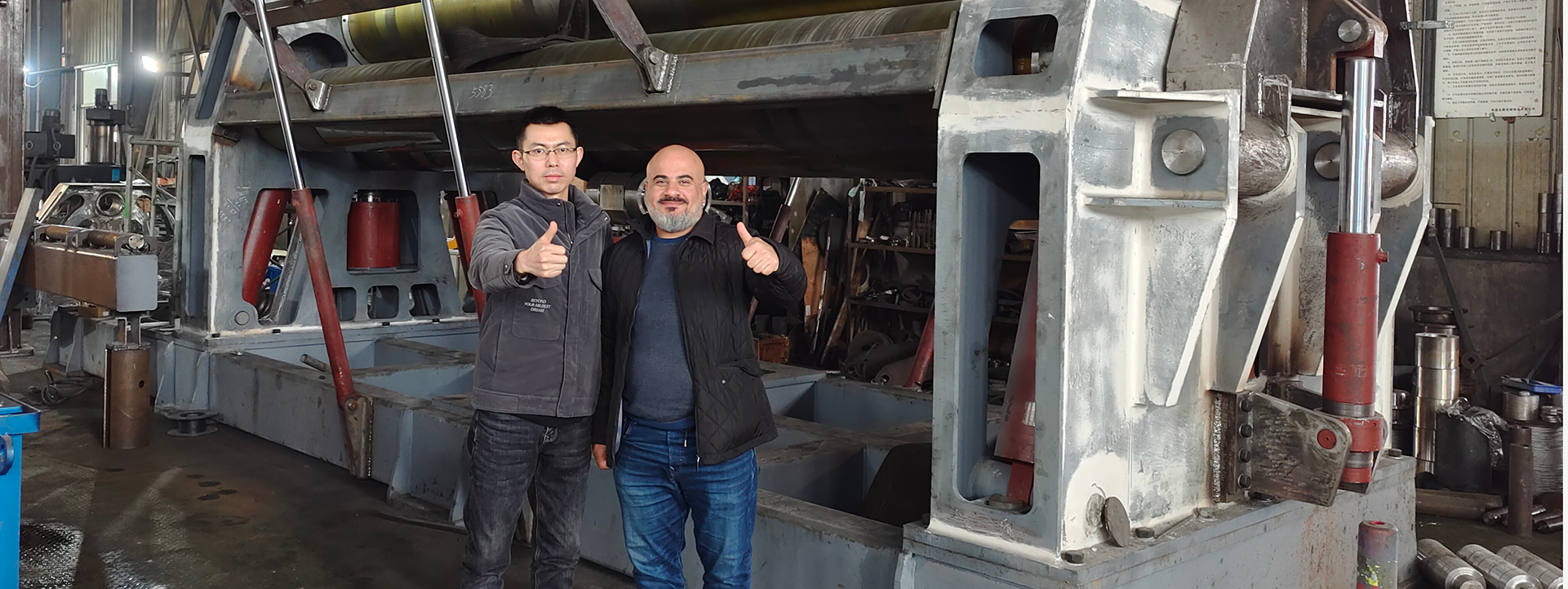Core Competencies in Plate Rolling Machine Operation
Understanding CNC vs. Hydraulic Plate Rolling Machines
When comparing CNC and hydraulic plate rolling machines, key differences lie in automation, control, and precision, with CNC machines offering advanced automated features while hydraulic ones rely on manual settings. CNC machines excel in complex programs and automated production runs, enhancing efficiency and precision through sophisticated technology. This makes them particularly suitable for high-volume industrial scenarios, where reduced operational errors and consistency are crucial. In contrast, hydraulic machines shine in low-volume, high-strength applications demanding physical control and adaptability. Industry data supports that CNC machines can reduce operational errors by as much as 30% compared to traditional manual methods, underscoring their value in modern manufacturing contexts.
Material Selection and Thickness Considerations
Choosing the right material is crucial in plate rolling operations, where specific application requirements and machine specifications guide the selection, typically involving metals like steel, aluminum, and various alloys. The thickness of these materials significantly impacts machine performance and longevity; for materials thicker than a certain gauge, specific setups may be necessary to ensure successful operation. Optimal material selections for different bending applications are backed by data on strength and ductility, which highlight the importance of using materials that meet both quality and efficiency standards. Selecting the right material not only minimizes waste but also enhances safety in the plate rolling process, ensuring operators can maintain high-performance levels while adhering to safety protocols.
Safety Protocols for Effective Operator Training
Essential PPE and Hazard Mitigation Strategies
In the world of plate rolling operations, ensuring safety is fundamental. Essential personal protective equipment (PPE) such as safety glasses, gloves, hearing protection, and steel-toed boots are prerequisites to protect workers from potential hazards. Implementing comprehensive hazard identification and risk assessment processes in the workplace is crucial to preempt accidents and injuries. According to OSHA guidelines, there is a significant reduction in workplace injuries when proper PPE is utilized. Continuous education and training programs play a vital role in keeping operators informed about the latest safety strategies and standards, ultimately fostering a culture of safety within the organization.
Emergency Stop Procedures and Machine Lockout Protocols
Effective training encompasses a thorough understanding of emergency stop procedures. During machine malfunctions or other hazards, immediate action is critical. Detailed knowledge of emergency stop protocols ensures operators can promptly halt operations to prevent harm. Equally important are machine lockout/tagout (LOTO) procedures, which secure machines during maintenance, preventing unintended restarts. Studies cited by OSHA indicate that LOTO practices significantly reduce workplace incidents. Regular training is recommended to familiarize operators with shutdown locations and procedures, ensuring they can swiftly and safely respond to emergencies.
Advanced Techniques for Precision Bending
Mastering CNC Control Panels and Automated Systems
Understanding the fundamental components of CNC control panels is crucial for operating plate rolling machines efficiently. These panels are at the heart of programming and executing operations, including setting up coordinate systems, optimizing tool paths, and ensuring precise bending outcomes. Mastery in CNC programming often requires proficiency in understanding industry standards that guarantee production processes meet quality and compliance benchmarks. Operators are encouraged to undergo regular training and updates to stay abreast of the latest software advancements. This not only ensures consistent quality but also improves the efficiency of CNC operations, making operations more reliable and reducing potential downtimes.
Hydraulic Pressure Adjustments for Complex Shapes
Adjusting hydraulic pressure is a key element in achieving accurate bends, especially when dealing with intricate designs. Operators need to carefully manage pressure settings to accommodate different material types and thicknesses, customizing the pressure ranges accordingly. Best practices emphasize gradually adjusting the pressure to prevent material distortion and ensure high-quality bends. For instance, softer materials may require lower pressures, while denser ones will need higher power settings for precision. By monitoring these adjustments and practicing methodical approaches, operators can enhance the precision and quality of their bending operations, aligning with industry standards and expectations.
Maintenance and Troubleshooting Best Practices
Daily Inspection Routines for Machine Longevity
A daily inspection routine is crucial for prolonging the life of metal plate rolling machines and ensuring their optimal performance. Operators should adhere to a checklist that identifies key components requiring regular checks. Essential elements include checking lubrication levels, assessing wear on gears and belts, and inspecting hydraulic systems for leaks and pressure inconsistencies.
- Impact of Routine Maintenance: Regular maintenance extends machine life by preventing breakdowns and minimizing repair costs. Consistent checks lead to reduced downtime, enhancing productivity.
- Indicators of Machine Distress: Operators should be vigilant for abnormal sounds, vibrations, or erratic machine behavior, as these could indicate underlying issues necessitating immediate attention.
Referring to manufacturer-recommended maintenance schedules further enhances operational efficiency. By adopting industry-standard practices, operators can ensure machines' longevity and seamless functioning, leveraging hydraulic press brake machines to the fullest through proactive upkeep.
Identifying Material Slippage and Alignment Issues
Material slippage and alignment issues during the rolling process can lead to uneven bends and surface irregularities, compromising product quality. Recognizing these problems and implementing solutions is vital for maintaining production efficacy.
- Signs of Material Slippage: Uneven bends or surface irregularities signal material slippage. These often occur due to poor material grips or incorrect machine settings. Prompt detection and resolution are essential to avoid delays.
- Troubleshooting Techniques: Operators should employ quick response techniques, such as recalibrating CNC machines and adjusting hydraulic pressures, to resolve alignment issues before they escalate. Proper calibration minimizes risks associated with both CNC and hydraulic machines.
Industry statistics highlight that timely maintenance of slippage and alignment problems can save significant production time, exemplifying best plate bending machines for sale. Optimal setups ensure these machines operate seamlessly, further empowering operators to leverage their capabilities fully.
Table of Contents
-
Core Competencies in Plate Rolling Machine Operation
- Understanding CNC vs. Hydraulic Plate Rolling Machines
- Material Selection and Thickness Considerations
- Safety Protocols for Effective Operator Training
- Essential PPE and Hazard Mitigation Strategies
- Emergency Stop Procedures and Machine Lockout Protocols
- Advanced Techniques for Precision Bending
- Mastering CNC Control Panels and Automated Systems
- Hydraulic Pressure Adjustments for Complex Shapes
- Maintenance and Troubleshooting Best Practices
- Daily Inspection Routines for Machine Longevity
- Identifying Material Slippage and Alignment Issues




